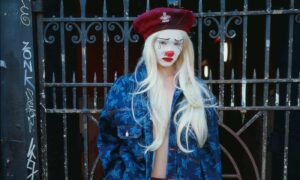Sting, the iconic musician known for his ability to deftly maneuver through genres while maintaining his distinctive sound, recently unveiled his latest musical venture in New York City. In a performance that melded his penchant for musical risk-taking with a deep reverence for his roots, the artist’s new power trio left an indelible mark on the city’s bustling music scene. This unexpected return to a power trio configuration—a stripped-back setup that harkens to his days with The Police—showcases Sting’s unwavering curiosity and willingness to embrace creative evolution even at this stage of his career. For an artist who has consistently expanded his sound by blending reggae, jazz, and world music, the trio format presents a new canvas for exploration and reinvention.
Setting the Stage for Intimacy and Power
The trio—featuring Sting on bass and vocals, accomplished guitarist Dominic Miller’s son Rufus Miller, and drummer Zach Jones—took to the stage with a palpable sense of purpose. The decision to craft a power trio, particularly in an era when technology and overproduction often dominate live shows, felt deliberate. The sparse arrangement demanded a rawness and vulnerability from Sting that is often obscured by the layers of production present in his larger band configurations.
The choice of venue—a moderately sized, dimly lit theatre nestled in downtown Manhattan—created an environment that was both intimate and intense. Gone were the lush orchestrations and sophisticated, multi-layered arrangements that characterized his recent tours. Instead, Sting opted for a stripped-back sound that placed the spotlight on his nuanced voice and melodic bass lines. In this setup, the chemistry between the trio members was laid bare, revealing a dynamic interplay that was by turns urgent and understated.
Revisiting the Classics and Reimagining the New
The setlist, a careful balance between old and new, catered to both die-hard fans and casual listeners. Revisiting classics like “Message in a Bottle” and “Walking on the Moon” in this streamlined format served as a reminder of the immediacy and punch of The Police’s original sound. The stripped-down arrangements breathed new life into these songs, making them feel unexpectedly fresh. Without the accompaniment of keyboards, backup singers, or additional guitars, every note played and every syllable sung seemed to carry more weight.
Yet it wasn’t all about nostalgia. The trio also showcased new material that hinted at Sting’s ongoing artistic reinvention. Tracks like “If It’s Love” from his 2021 *The Bridge* album, rendered in the skeletal instrumentation of the trio, felt more spacious and contemplative. Here, Sting’s voice—a rich tenor that has grown slightly more weathered with age—lent a world-weariness to the new songs that made them resonate deeply. The arrangements allowed room for each musician to carve out their own space within the songs, resulting in a more elastic and improvisatory feel that contrasted sharply with the regimented nature of Sting’s studio recordings.
The Guitar and Drum Dichotomy
Central to the success of the evening was the inspired interplay between Rufus Miller’s guitar work and Zach Jones’s drumming. Rufus Miller’s presence, while rooted in the rock traditions championed by his father, brought a fresh sensibility to the music. His deftness on the fretboard allowed him to seamlessly transition from jagged, angular riffs to delicate, arpeggiated passages. This duality underscored the emotional breadth of the performance, as his guitar veered from menacing dissonance to fragile melody, sometimes within the same song.
Meanwhile, Zach Jones’s drumming, though often understated, proved to be a revelation. Eschewing the bombast that often characterizes live rock drumming, Jones opted for a more subtle, nuanced approach. His use of space and dynamics imbued the performance with a rhythmic tension that kept listeners on the edge of their seats. Whether it was the crisp snare hits driving the chorus of “Every Breath You Take” or the inventive cymbal work during “Englishman in New York,” Jones demonstrated a level of restraint and musicality that perfectly complemented the trio’s aesthetic.
Sting’s Evolution in Perspective
What makes Sting’s venture with this power trio compelling is the sense of evolution it represents. Where The Police were defined by a frenetic, youthful energy, this incarnation feels more introspective and deliberate. The music brims with a sense of reflection, as if Sting is revisiting his musical past to find new meaning within it. This is perhaps most evident in the new renditions of tracks like “King of Pain” and “Fragile,” where the lyrics’ emotional potency is accentuated by the absence of sonic clutter.
There’s a certain irony in the fact that Sting—an artist known for pushing boundaries—finds himself returning to one of rock’s most elemental configurations. Yet, in doing so, he isn’t merely retracing his steps but rather reimagining what a power trio can be. By paring down the music to its bare essentials, Sting forces listeners to focus on the interplay between melody, harmony, and rhythm—elements that often get lost in his more ornate productions.
Impression
The audience’s reaction to the trio’s New York City debut was one of rapt attention and enthusiastic appreciation. For a city accustomed to being the epicenter of musical innovation, the performance was a testament to the enduring power of simplicity. While much of the music industry continues to embrace excess—whether in the form of lavish stage productions or overly polished recordings—Sting’s latest endeavor feels almost revolutionary in its minimalism.
Looking forward, the potential for this trio to influence Sting’s future work is immense. It’s easy to imagine the group venturing into more experimental territory, perhaps exploring jazz, blues, or even acoustic interpretations of Sting’s vast catalog. The format also lends itself to spontaneity, suggesting that future performances might see the trio delving into deeper improvisational waters.
Sting’s new power trio isn’t merely a nostalgic exercise; it’s a statement of intent. The performance underscored the fact that, even after four decades in the industry, Sting remains a restless creative force. By stripping back the arrangements and allowing the songs to breathe, he offered fans an unvarnished glimpse into his musical soul. The trio’s New York City debut felt like both a homecoming and a new beginning—an opportunity for Sting to reconnect with his roots while simultaneously pushing his artistry forward.
In a musical landscape where reinvention is often synonymous with reinvention for its own sake, Sting’s latest project is a breath of fresh air. The trio’s performance was a masterclass in how to evolve without losing sight of what made one’s music resonate in the first place. It was an evening that celebrated the power of simplicity and reminded audiences of the enduring magic that happens when three musicians come together in perfect harmony.
No comments yet.








